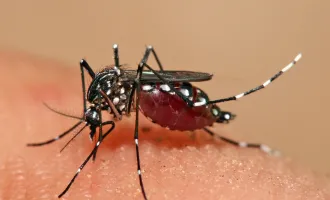Cases of Whooping Cough Up Sharply in U.S.
The United States is experiencing a pertussis epidemic — possibly the largest outbreak in the last 50 years.
According to the Centers for Disease Control and Prevention (CDC), the provisional count of reported cases last year exceeded 36,000 as of November 17, 2012, twice the level in 2011 and well above the previous high of 27,550 in 2010.
There have been 16 pertussis-related deaths reported so far this season. Infants younger than 3 months of age make up the majority of those deaths, followed by children 7 to 10 years old and teenagers 13 to 14 years old.
Pertussis epidemics are not uncommon in the United States, occurring every three to five years. One reason for the flare-ups is that those who have contracted pertussis, or been vaccinated, are not guaranteed lifelong immunity.
Many people may not even realize they have whooping cough. In a recent New York Times article, Dr. James Cherry, a professor of pediatrics at the University of California at Los Angeles, explained that in a person who has had the disease or been immunized for it, its symptoms — a runny or stuffy nose, little or no fever and a cough — typically resemble the symptoms of a common cold. Most people weather an episode without ever going to the doctor, unaware that they are spreading the disease.
Pertussis is so contagious that people with whooping cough will infect everyone living with them, according to the CDC website. That is the reason why the CDC recommends that anyone with a cough should avoid contact with infants, and that those who regularly care for children should be vaccinated.
“In general, pertussis should be considered in anyone with a new prolonged cough (greater than two weeks), especially if it is worse than other coughs the patient has had,” said Dr. Thomas B. Newman, Professor of Epidemiology and Biostatistics and Pediatrics at UCSF. “Any cough that occurs in fits or with inspiratory obstruction, or that leads to vomiting, should raise that suspicion.”
The group at by far the highest risk for the disease are infants younger than 6 months, especially those who are not immunized. “So for adults with contact with young infants,” Dr. Newman emphasized, “the threshold for diagnosing pertussis should be much lower.”
A second cause of the epidemic may be that the newer vaccinations may not last as long as doctors expected. The New York Times article reported that a recent study conducted at the Kaiser Permanente Vaccine Study Center in Oakland showed that protection from the new acellular pertussis vaccine wore off over the five-year period after the vaccinations and that children who subsequently got infected were younger than those in past outbreaks of the disease.
Currently, infants at 2, 4, 6, 15 and 18 months and once again between 4 to 6 years old are vaccinated with the DTaP vaccine. This is a combination vaccine that confers immunity to diphtheria, tetanus and pertussis. Until 2005, the pertussis vaccine used to be a whole-cell vaccine known as DTP, but it caused serious side-effects, such as seizures, high fevers, floppiness and uncontrollable crying.
The new vaccine has acellular pertussis components and is known as DTaP in the form in which it is administered to infants, while a booster vaccine known as Tdap is administered to teenagers and adults. Tdap boosters are administered at age 11 or 12.
Dr. Nicola P. Klein, who conducted the Kaiser study, acknowledged<pls check edit> that the old vaccine conferred longer immunity, and that the new vaccine is definitely safer and effective even if it is shorter acting. Because of the study’s findings, Dr. Klein believes booster shoots should be given earlier, at the age of 8 or 9.
Officials at the CDC had originally thought that the large increase in recent pertussis cases was due to the fact that the patients had not kept up to date with their immunizations. It is now believed that the rise is most likely due to the shorter immunity conferred by the new vaccine.
Pertussis is caused by infection with the bacterium Bordetella pertussis. The disease gets its popular name from the distinctive whooping sound that is heard between coughing spells as the sick person gasps for air. The pertussis-related cough is known as the “100-day cough” because it can last up to 10 weeks.
Pertussis is a highly contagious disease that is transmitted through the air in the coughs and sneezes of infected persons. Touching wet surfaces coughed or sneezed on by infected individuals and then touching one’s own eyes or nose can also be a source of transmission.
A person or infant who has not been vaccinated can display more severe symptoms. The CDC reports that 57 percent of infants who contract pertussis need to be hospitalized and can develop other complications. Of those infants who are hospitalized:
- 1 in 4 (23 percent) contract pneumonia (lung infection),
- 1 or 2 in 100 (1.6 percent) will have convulsions (violent, uncontrolled shaking),
- Two-thirds (67 percent) will have apnea (slowed or stopped breathing),
- 1 in 300 (0.4 percent) will develop encephalopathy (disease of the brain),
- 1 or 2 in 100 (1.6 percent) will die.
Links to videos of a hospitalized patient and child with whooping cough:
http://streaming.cdc.gov/vod.php?id=7ffe0c683b0dc2765090991b8f8018c920120904104432647
http://www.nejm.org/action/showMediaPlayer?doi=10.1056/NEJMicm1111819&aid=NEJMicm1111819_attach_1&area


